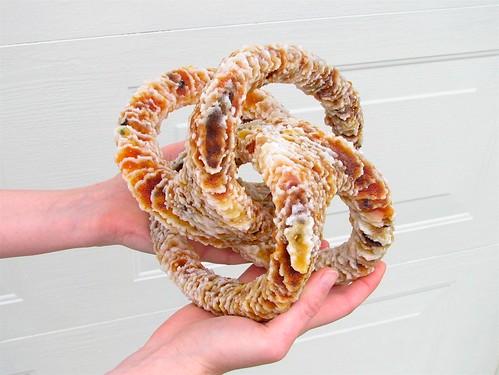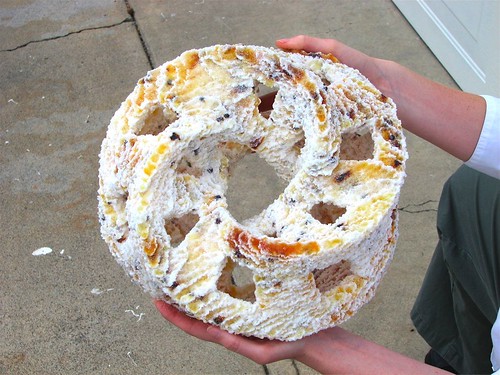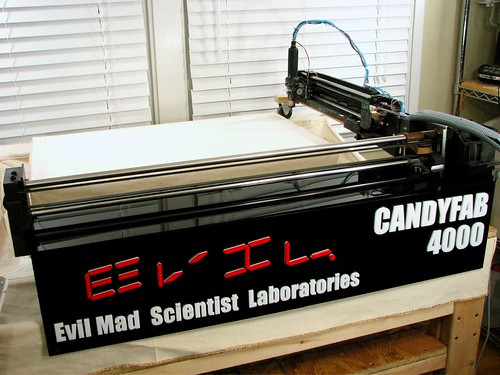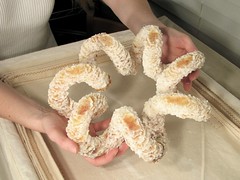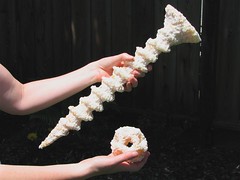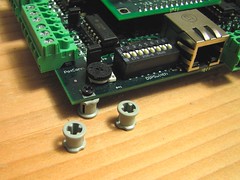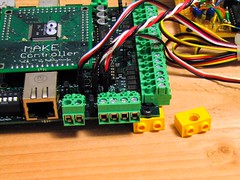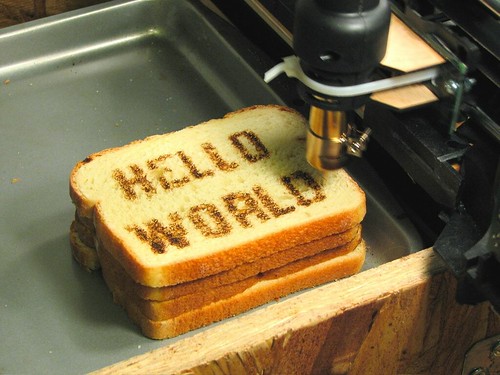This is a rendering of the sculpture Soliton by Bathsheba Grossman, as output by the CandyFab 4000; it’s a three-dimensional form made out of pure sugar. Seeing Bathsheba’s sculptures at the 2006 Maker Faire was the inspiration for us to build the machine in the first place, so it’s quite exciting to be able to print this. (The design is used by her kind permission– please buy some of her sculptures!)
This is our second try at fabbing this difficult shape. Our first attempt was at a somewhat smaller size and ran into trouble with the thin beams when *one* of our thin horizontal layers turned out to be too weakly bonded. To avoid a second failure, we enlarged the model but also ran the heater element very hot and for an extended period of time to make the pixels srong, but also larger, more rounded, and richer in color– a darker caramel.
In this view we’re looking right down at the printed layers of sugar; we think that the grain of the layers makes this look a lot like a wood carving.
Of course, that’s not all that we’ve been printing this week. Here is one more large-scale object that we made:
The shape is a 3/4 twist mobius strip with a square cross section and windows cut at regular intervals in all of the sides the side. Even though it’s hollow, it still weighs seven pounds and fourteen ounces– that’s a lot of sugar. We’re bringing this monster to Maker Faire this weekend, so you can see it for yourself, too.




